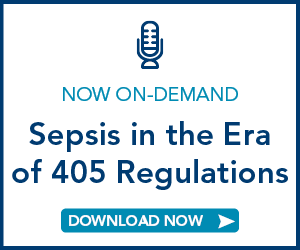Medical Data, Not Billing Codes, Provide More Accurate Sepsis Estimates
March 2nd, 2017
BOSTON – Analyzing medical data instead of billing codes is a more accurate way to measure trends in septic shock in hospitals, a new study indicates.
Sepsis is a major public health problem and the focus of national quality measures and performance improvement initiatives, and, therefore, hospitals need to fully understand sepsis trends and outcomes, according to a report in the journal CHEST.
The dilemma, note researchers from Harvard Medical School/Harvard Pilgrim Health Care Institute and Division of Infectious Diseases, Brigham and Women's Hospital, all in Boston, is that sepsis is a heterogeneous syndrome without a definitive test.
To try and resolve the problem, the study team set out to uncover the most reliable way to track cases of septic shock, ultimately determining that surveillance based on clinical criteria was most accurate.
"Our results underscore the challenges in tracking sepsis and septic shock using diagnosis billing codes, which is the current method typically used for epidemiologic studies as well as quality measures. We show, however, that an alternative surveillance method using clinical data is feasible and may provide more reliable estimates of trends over time," explained co-lead investigator Chanu Rhee, MD, MPH.
To come to that conclusion, the study team examined data from 27 academic hospitals between 2005-2014 and looked for cases of septic shock using two different methods: claims data and clinical data. For claims-based surveillance, septic shock-related ICD-9 billing codes were employed, while, for clinical surveillance, evidence that patients received concurrent vasopressors, blood culture orders, and antibiotics was collected.
Of 6.5 million adult hospitalizations reviewed, 99,312 (1.5%) were flagged by clinical criteria, 82,350 (1.3%) by ICD-9 codes, and 44,651 (0.7%) by both. Results indicate that sensitivity for clinical criteria was higher than claims — 74.8% vs 48.3% — although positive predictive value was comparable — 83% vs 89%.
In terms of septic shock trends over time, researchers found that, with clinical data, septic shock cases rose from 12.8 to 18.6 per 1,000 hospitalizations, while mortality declined from 54.9% to 50.7%. Results from ICD-9 codes show a much larger leap, however, from 6.7 to 19.3 cases per 1,000 hospitalizations, while mortality decreased from 48.3% to 39.3%.
"The incidence of patients with discharge codes or clinical markers indicative of treated septic shock steadily rose during the 10-year surveillance period, and in-hospital mortality for this population declined," Rhee pointed out. "The magnitude of these trends was considerably less when using clinical data compared with claims codes. Clinician record reviews suggested that clinical surveillance definitions for septic shock provide greater sensitivity and comparable positive predictive value than billing codes."
Rhee also cautioned that neither method for tracking septic shock is ideal, explaining, "The imperfect sensitivity of codes as well as our clinical surveillance definition suggest that both methods may still underestimate the true burden of septic shock. However, surveillance-based clinical data may allow for more reliable estimates of septic shock burden and trends compared with administrative data."



